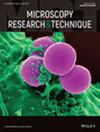Characterization, anti-microbial, anti-oxidant and growth promoting effects of biogenically synthesized silver nanoparticles derived from Dicliptera bupleuroides Nees
Abstract
One of the most important areas of nanotechnology is the use of nanoparticles (NPs) for a variety of environmental and biological applications, with silver nanoparticles (Ag-NPs) gaining a lot attention due to their distinct properties. The current study deals with the synthesis of Ag-NPs from Dicliptera bupleuroides Nees leaf extract and to determine their antioxidant, antimicrobial potential and effects on wheat seed germination and growth. UV–Visible spectrum revealed a prominent absorption peak at 442 nm, elucidating the conformation of the Ag-NPs synthesis. Scanning electron microscopy (SEM) showed distinctive triangular, pyramidal, and irregular shape. X-ray diffraction (XRD) demonstrated their crystalline nature, with average crystallite size of the Ag-NPs measured at 20.52 nm. Fourier-transform infrared spectroscopy (FT-IR) further confirmed the presence of functional groups such as Phenols (O-H stretch), transition metal carbonyls N-H, ≡C-H, C ≡ N, C ≡ C, C-Cl, C-Br and O-H bonds on the surface Ag-NPs. The antibacterial activity of the Ag-NPs was most pronounced against Bacillus subtilis, with a zone of inhibition (ZOI) measuring 11 mm ± 0.57 at a concentration of 1000 μg/mL (45% inhibition). Likewise, Ag-NPs exhibited highest antioxidant potential (73.2%) at 100 μg/mL compared with standard (ascorbic acid) which showed (76%) at the same concentration. Furthermore, the effect of D. bupleuroides mediated Ag-NPs on wheat seeds growth and germination was recorded maximum at high concentrations (200-300 ppm). In conclusion, D. bupleuroides mediated Ag-NPs showed safe, cost effective and environmentally friendly synthesis which can be used as an antibacterial and antioxidant agent as well as for enhancing the growth and seed germination of crop seeds globally.
Research Highlights
- Nanotechnology is the study of nanoparticles for biological and environmental applications.
- Ag-NPs among other NPs have received broad attention because of their unique properties.
- D. bupleuroides Ag-NPs: 45% antibacterial, 73.2% antioxidant, enhance wheat germination.
- D. bupleuroides-mediated Ag-NPs are both cost-effective and environmentally beneficial.

 求助内容:
求助内容: 应助结果提醒方式:
应助结果提醒方式:


